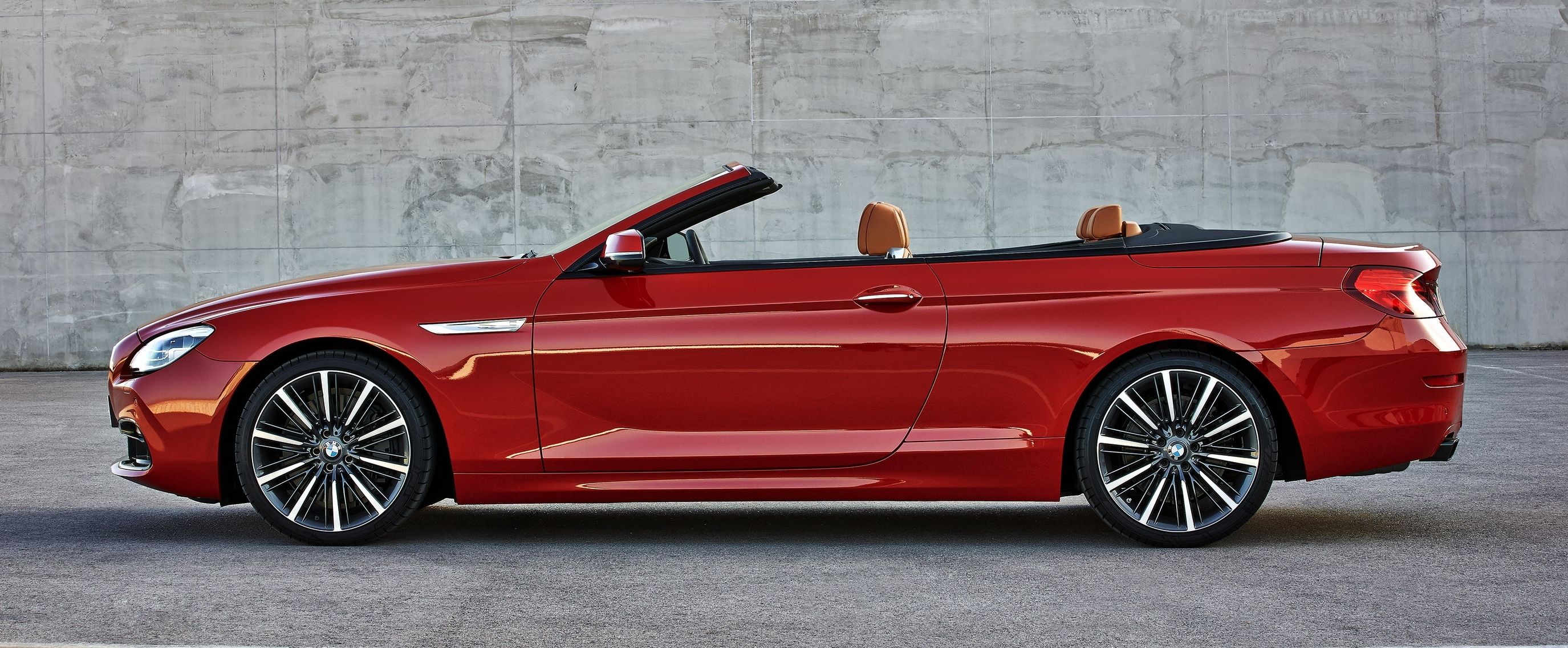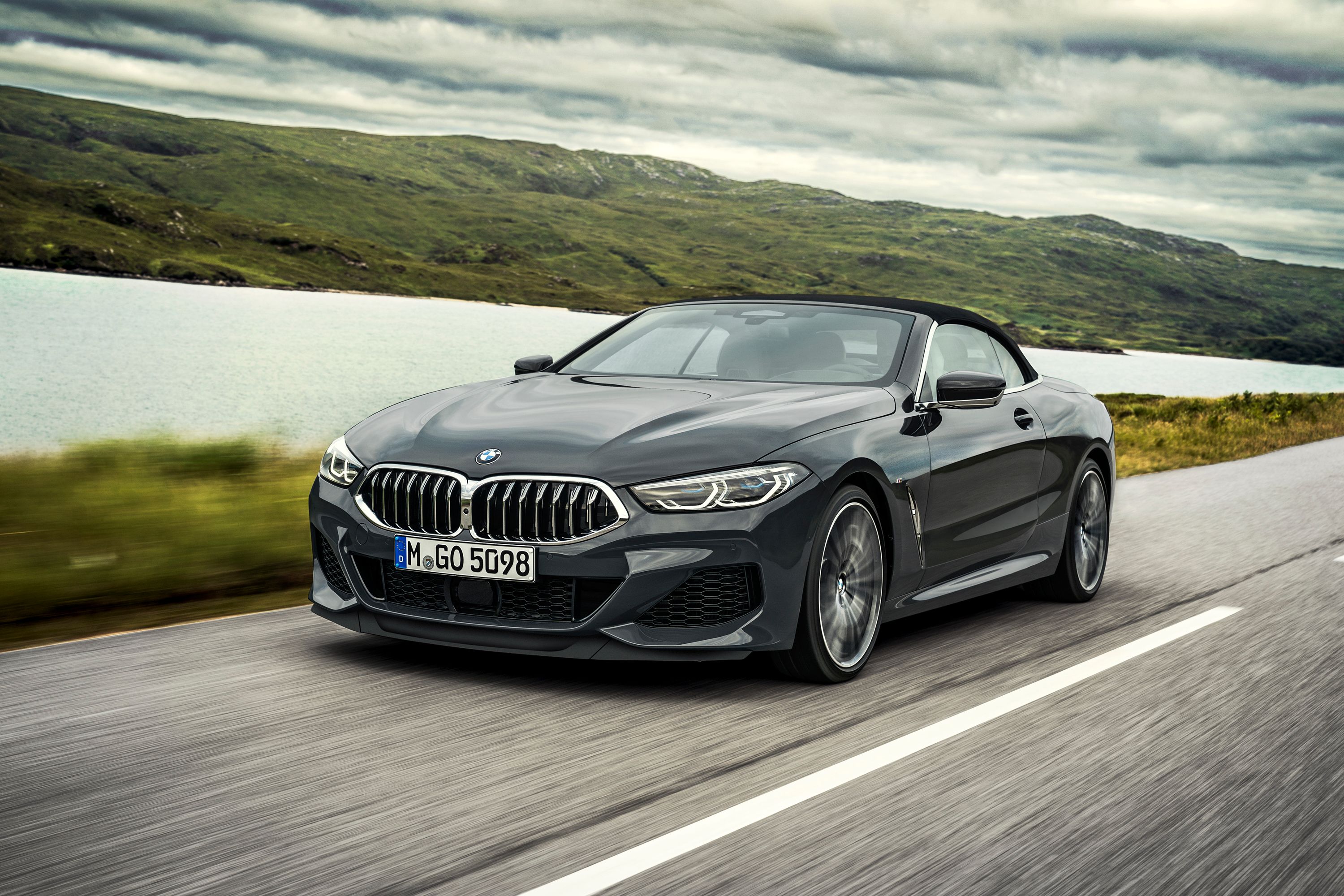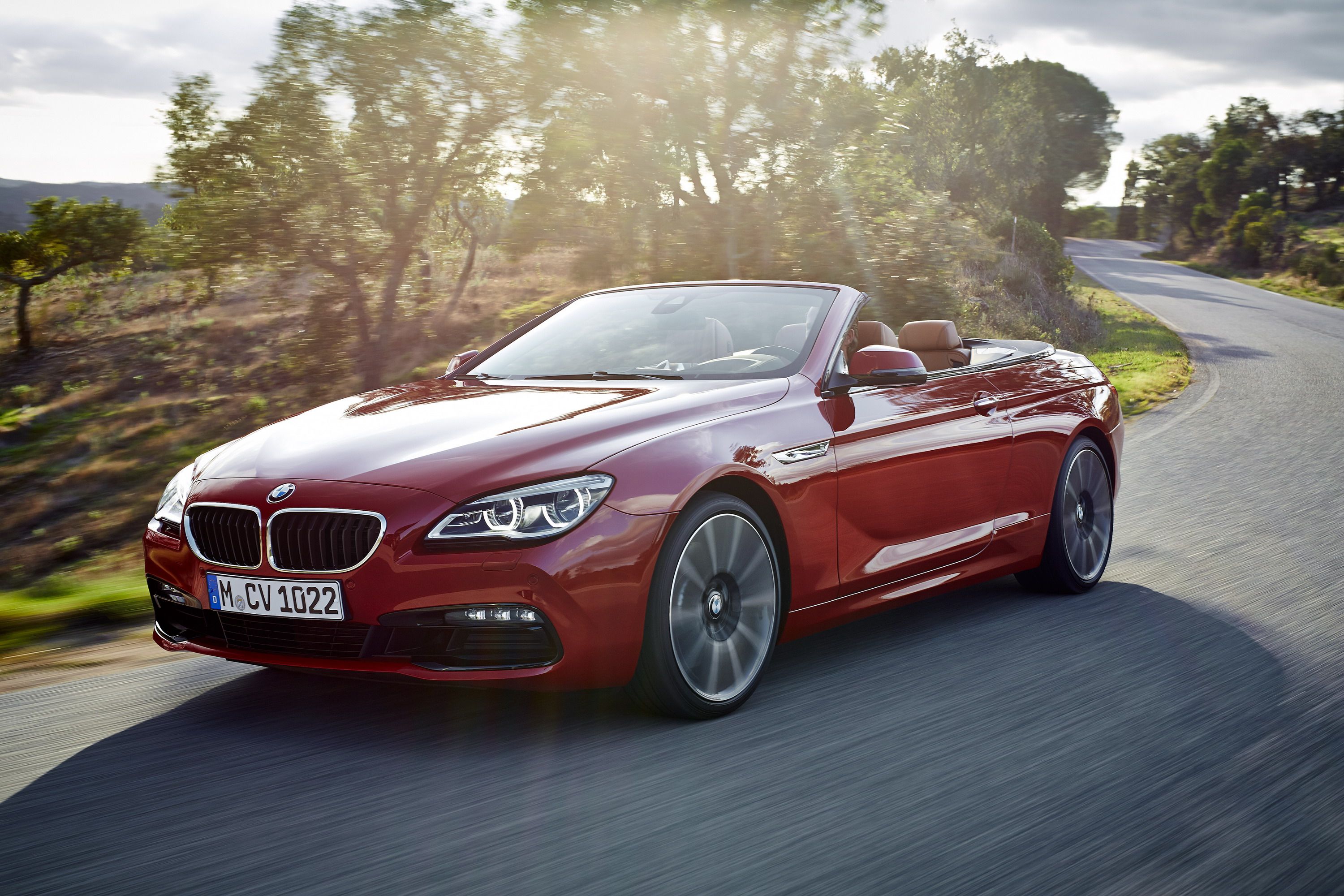The BMW 8 Series Convertible has arrived, and with its arrival comes a lot of questions regarding how it compares to the model it’s effectively replacing: the departed 6 Series Convertible. To be clear, the 8 Series Convertible isn’t a direct-line successor to the 6 Series Convertible. It’s packaged as a true-born flagship, developed to compete against the likes of the Mercedes-Benz S-Class Cabriolet and, in some ways, the Aston Martin DB11 Volante. You can’t say the same thing about the 6 Series Cabriolet. Still, even if there’s no direct connection between the two, it’s hard not to think of one without thinking of the other. So, we lined them up together to see how the 8 Series Convertible and the 6 Series Convertible compare to each other.
Exterior
Before we get started, it’s important to establish the fact that the BMW 6 Series Convertible doesn’t exist anymore. BMW ended production of the third-generation convertible model in February 2017. With the convertible out of the picture, the fourth- and current-generation 6 Series remains in the market as the 6 Series Gran Turismo fastback. Now that we’ve cleared that important detail, it is hard to look at the new 8 Series Convertible and not get reminded of the departed 6 Series Convertible.
Front
|
|
ids=804976,804977 |
no_overlay=true> |
We’ve heard people say that the BMW 8 Series Convertible looks like a more grown-up version of the 6 Series Convertible. If the latter is a teenager, the former is an adult. That manifests itself in the measurements, too. The 6 Series measures 74.6 inches wide while the 8 Series measures 74.9 inches wide. It's not a big difference, but visually, the latter just looks bigger.
The air intakes are larger, too, while the hood is far more heavily creased compared to the 6er. The headlights come in different shapes, but the ones on the 8 Series look more sophisticated and, understandably, come with newer and better technology. The bumper designs on the two models are completely different, as well. Whereas the bumper on the 6 Series looks more subtle and refined, the bumper on the 8 Series is teeming with sharp angles and edges, creating a wider and more aggressive profile. The bumper designs on both models are, in many ways, a microcosm of what both models stand for. The 6 Series Convertible was presented as a luxury ride when it was still around. The 8 Series Convertible, on the other hand, marries luxury and sportiness much more fluidly than the 6 Series Convertible ever did.
Side
|
|
ids=804978,804980 |
no_overlay=true> |
This section is where you see the most similarities between the 6 Series Convertible and the 8 Series Convertible. From afar, you might even mistake one for the other, provided that you don’t notice the front end design that peels into the side profile of both models. Here’s where it gets interesting. The 6 Series Convertible is actually longer than the 8 Series Convertible. Believe me; I was surprised, too. When it was still around, the 6 Series measured 192.8 inches long. That’s almost two inches longer than the 8 Series Convertible, which measures “only” 191.2 inches long.
There are a few reasons for that.
Rear
|
|
ids=804981,804982 |
no_overlay=true> |
Remember when I mentioned that the 8 Series Convertible looks like a grown-up version of the 6 Series Convertible? No more is that evident than in the rear sections of both models. At first glances, the rear sections of both models actually look similar.
Exterior Dimensions
|
2020 BMW 8 Series Convertible |
2016 BMW 6 Series Convertible |
|
|
Length inches |
191.2 |
192.67 |
|
Width inches |
74.9 |
74.56 |
|
Height inches |
53.0 |
53.74 |
|
Wheelbase inches |
111.1 |
112.40 |
Interior
Somewhat surprisingly, the 6 Series Convertible more than holds its own in terms of room in the cabin. It has more headroom — 40.3 inches to 38.9 inches — compared to the 8 Series Convertible. Front legroom is a wash since both have 42.1 inches of space in that department, but the 6 Series gets the leg-up — no pun intended — in the rear legroom department with 30.5 inches of space compared to just 29.5 inches in the 8 Series Convertible. The 8 Series Convertible takes the win in terms of front shoulder room — 57.2 inches to 56.9 inches — but the 6 Series returns serve with a much bigger shoulder in the back — 49.6 inches to 45.7 inches. Cargo space is identical for both models 12.4 cubic feet.
Convertible-Only Features
Drivetrain and Performance
Back when it was still available, the BMW 6 Series Convertible came with two different engine options. There was a 3.0-liter twin-turbo inline-six engine for the 640i Convertible that produced 315 horsepower and 330 pound-feet of torque, and there was a 4.4-liter twin-turbo V-8 engine for the 650i Convertible that produced 445 horsepower and 480 pound-feet of torque. Both engines were mated to an eight-speed automatic transmission that sends the power to the two rear wheels, or in the case of xDrive models, all four wheels.
These numbers are important to remember, especially when you line them up against the 8 Series Convertible. Like the 6er, the 8 Series Convertible comes with two of the same engine options. The 3.0-liter twin-turbo inline-six engine produces 316 horsepower and a whopping 500 pound-feet of torque. Meanwhile, the 4.4-liter twin-turbo V-8 engine produces 523 horsepower and 553 pound-feet of torque, far and way more powerful than the 650i Convertible.
|
BMW 650i Convertible |
BMW 640i Convertible |
BMW 840i Convertible |
BMW 850i Convertible |
|
|
Engine |
4.4-liter twin-turbo V-8 |
3.0-liter twin-turbo inline-six |
twin-turbo 3.0-liter inline six-cylinder |
Turbo 4.4-liter V-8 |
|
Output |
445 HP @ 5,500 RPM |
315 HP @ 5,800 – 6,000 RPM |
316 HP |
523 HP @ 5,500 - 6,000 RPM |
|
Torque |
480 LB-FT @ 2,000 – 4,500 RPM |
330 LB-FT @ 1,300 – 4,500 RPM |
500 LB-FT |
553 LB-FT @ 1,800-4,600 RPM |
|
0 – 60 mph |
4.5 seconds |
5.4 seconds |
5.2 seconds |
3.9 seconds |
|
Top Speed |
155 mph |
155 mph |
155 mph |
155 mph |
Pricing
The BMW 6 Series was priced from $86,700 to $101,300 when it was still available last year. The base 640i Convertible sold for $86,700 while the 650i Convertible sold for $98,300. The range-topping unit was the 650i Convertible xDrive, which sold for $101,300.
Final Thoughts
As good as the BMW 6 Series Convertible was for BMW during its run, it really doesn’t compare to the 8 Series Convertible. The latter is more dynamic, more powerful, and more luxurious than the departed 6 Series Convertible. There are no two ways about it. Granted, we don’t know how the 8 Series Convertible drives yet, but it doesn’t have to be aces in that department to outshine the 6 Series Convertible. The truth is, the 6 Series Convertible had its great qualities, but it also had some not-so-great qualities. Chief among them was its less-than-stellar driving dynamics, which is surprising in it of itself considering that it’s a BMW. Hopefully, the 8 Series Convertible can have a different result in that regard. There’s a lot riding on it as Bimmer’s flagship model. It’s delivered so far from what we can tell. Now it’s time for the 8 Series Convertible to show that it can live up to the hype.
Further reading
Read our full review on the 2020 BMW 8 Series Convertible.
Read our full review on the 2016 BMW 6 Series Convertible.



